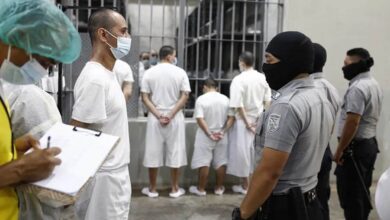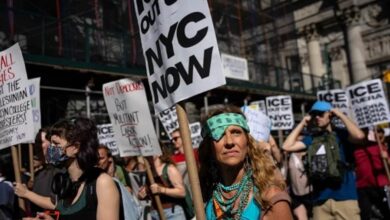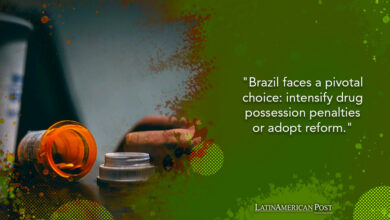5 causes of the historic protests on the island that have the Cuban government in trouble.

Cuba today is experiencing possibly the largest protests against the regime in years. Photo: YT-Yotuel
LatiAmerican Post | Santiago Gómez Hernández
Listen to this article
Leer en español: Cuba: Cómo una canción pone en jaque a la revolución
Cuba today is experiencing possibly the largest protests against the regime in years. For the first time in decades, thousands of Cubans are taking to the streets to demand freedom and the end of the dictatorship.
Since Sunday, in various locations around the country, the clamor of the people for change has been heard. The initial spark was in the city of San Antonio de Los Baños, southwest of Havana, and it has rapidly multiplied in other cities in the country, especially in the capital.
Also read: Is Cuba on the verge of a democratic spring?
Cuban President Miguel Díaz-Canel, the successor to the Castro brothers, asked the government supporters to also take to the streets to defend the "revolution."
"Patria Y Vida"
Although it is obviously naive to say that the only reason Cubans are marching in the streets is for a song, it is inevitable to assure that the various forms of protest and anti-government propaganda have found the listening ears of hundreds of citizens.
Proof of this is that both in the protests in Havana, and others organized by the Cuban diaspora around the world, the main slogan is "Homeland and Life", a term that also goes against the revolutionary slogan "Homeland or Death" that the Government still defends.
In addition, this viralization of Patria Y Vida" that worried the regime, also has another element and factor: access to the Internet. This is perhaps the most important tool the opposition has had on the island in years.
"Patria Y Vida" is a song composed by various exiled artists and opponents of the regime as a form of protest. The song has even been banned on the island and its mere reproduction represents an act of protest.
Relaxation of measurements and openness to the internet
For several years, Cuba has been going through a process of relaxation of measures promoted by the Government of Raúl Castro. Among several of these measures has been access to the Internet, which, although limited, has become a great tool for the flow of information between Cuba and the rest of the world.
Precisely, today we know in real-time what is happening in the streets and the violent reaction of the police forces loyal to the regime thanks to the use and access to the internet of the island's inhabitants. Even the march in San Antonio de los Banios was called through social networks.
The Latin American Spring
Cuba is not the only country in recent years that is experiencing historic protests. Demonstrations in the United States, Venezuela, Colombia, Chile, Puerto Rico, and Ecuador also demonstrate a tendency in the hemisphere to seek change. Today, internet access and communication between all these countries also serve to inspire new causes.
Health crisis
Despite the fact that Cuba is seen as the first country in the region to produce its own vaccine against COVID-19, its vaccine candidates have not helped them avoid the crisis in which they find themselves. Social networks have denounced since last week that Cuban hospitals are on the brink of collapse, that the daily records of 6,750 infections and 31 deaths on Saturday, and that the Government has refused to open a humanitarian corridor for the arrival of medicines. or commodities.
The regime defends itself, criticizes those who have wanted to promote the denunciations of the crisis on the island with the numeral #SOSCuba blames solely and exclusively the economic blockade as the cause of the island's problems.
Firm economic blockade
Since 1960, after the Cuban revolution, the United States has imposed a trade embargo on the island. This implies a ban on trade, investment, and cooperation by the United States and various allies with the island, with few exceptions.
Cuba has been able to survive these sanctions for decades. However, the economic crisis of the island for several years, the weakening of its commercial partners (such as Venezuela), and the reduction in income from tourism (the country's main industry) due to COVID-19 have left the Cuban economy very fragile. So much so that so far this year there have been growing inflation, blackouts, shortages of food, medicines, and basic products that have Cubans going hungry and in need, already in a country with little wealth.
#Cuba???????? La #CIDH tuvo conocimiento de las multitudinarias protestas que se desarrollan el #11Julio por la escasez de alimentos y medicinas, y la falta de garantías a la libertad de expresión y participación plural sobre asuntos de interés público. #DerechosHumanos 1
— CIDH – IACHR (@CIDH) July 12, 2021
The embargo continues despite the fact that for several years, the United Nations and most countries have asked the United States to release the embargo on the island, arguing that it not only affects the communist government, but also the population.





